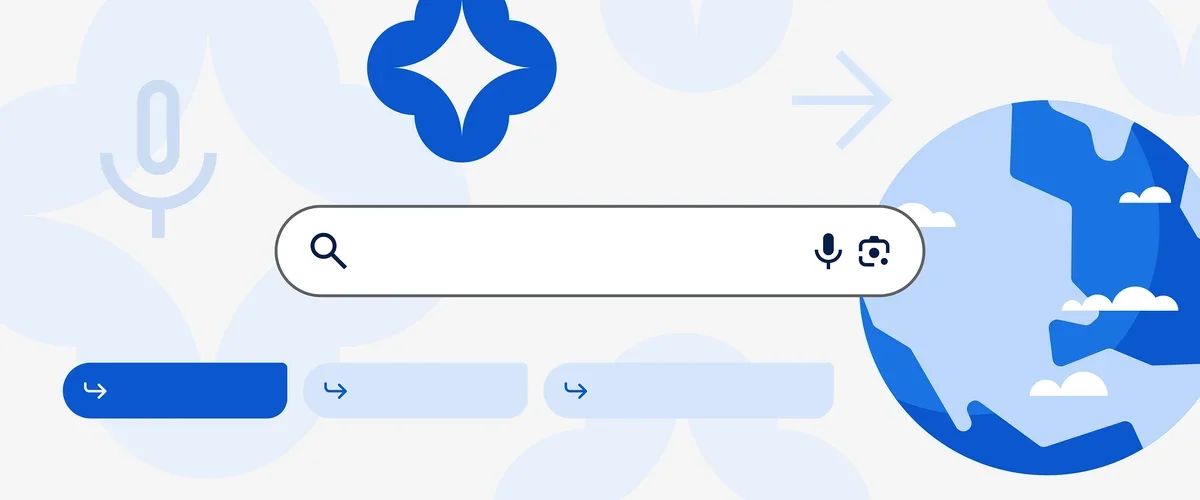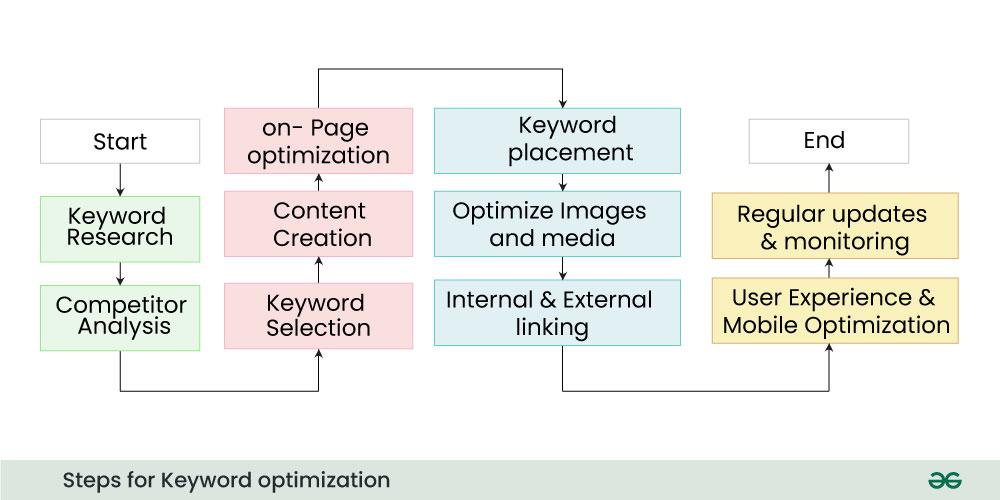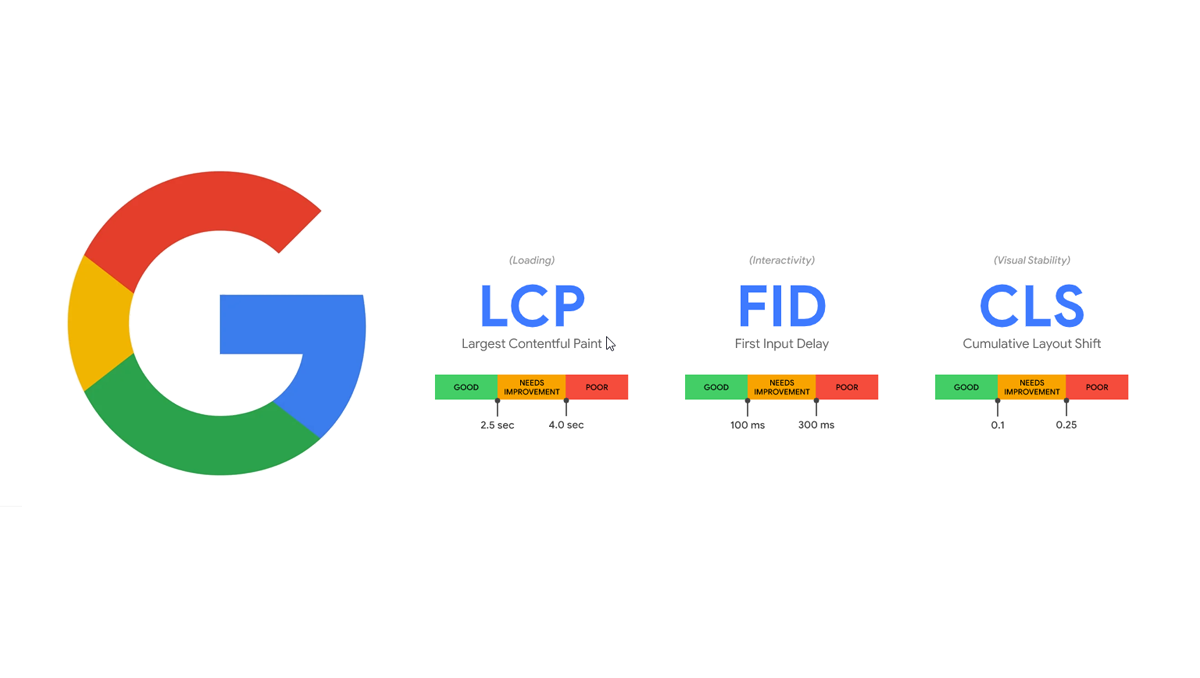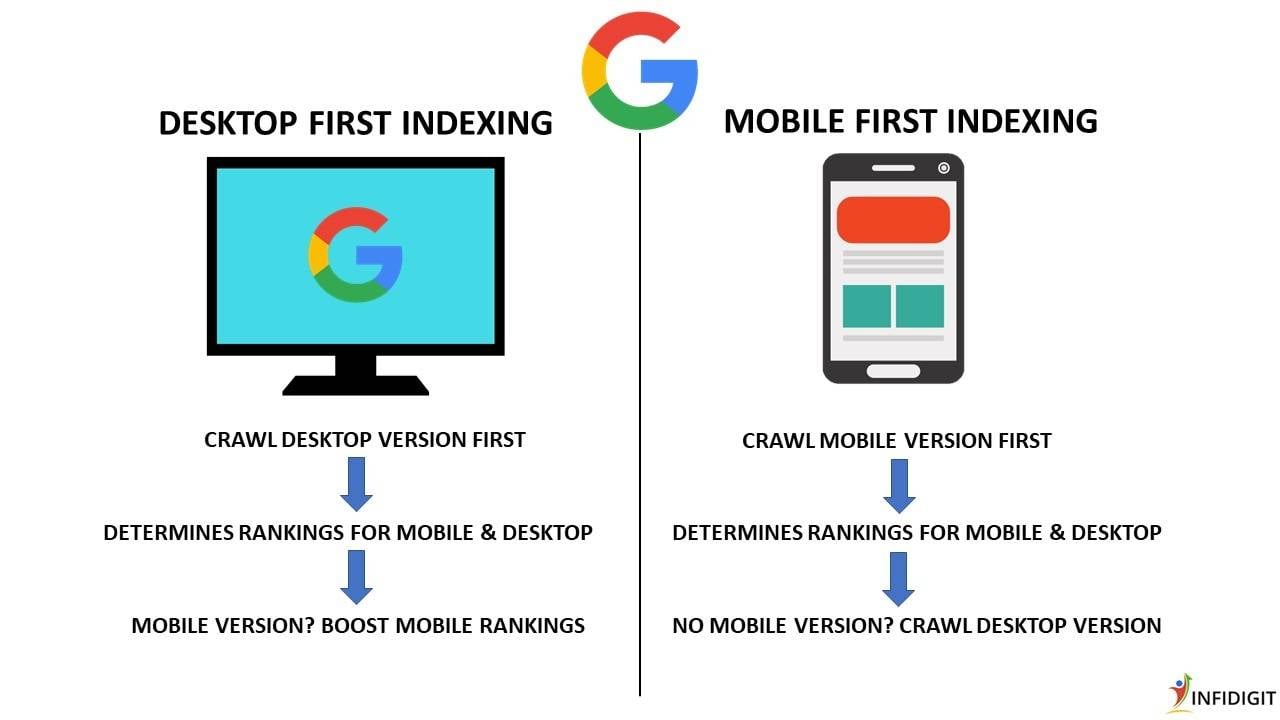
Table of Contents
- Google SGE ve Yapay Zeka Destekli Arama Sonuçları
- E-E-A-T: Deneyim, Uzmanlık, Yetkinlik, Güvenilirlik
- Kullanıcı Niyeti (Search Intent) ve Kapsamlı İçerik Stratejisi
- Konu Kümeleri (Topic Clusters) ve İç Bağlantılar
- Core Web Vitals ve Sayfa Hızı Optimizasyonu
- Mobil Öncelikli SEO (Mobile-First Indexing)
- Sesli Arama (Voice Search) İçin SEO Optimizasyonu
- Featured Snippets Optimizasyonu
- İçerik Yenileme ve Güncelleme Stratejisi
- Sonuç ve Özet
Share
SEO dünyası, her geçen yıl büyük değişimlere sahne oluyor ve 2025 yılı da istisna değil. Google’ın arama algoritmalarındaki sürekli güncellemeler, yapay zeka destekli içeriklerin yükselişi ve kullanıcı deneyimine verilen önemin artması, dijital pazarlamacılar ve içerik üreticileri için yeni stratejiler geliştirmeyi zorunlu hale getiriyor. Artık sadece anahtar kelimeleri doğru şekilde yerleştirmek yeterli değil; arama motorlarının ve kullanıcıların gerçekten değerli bulacağı, kapsamlı ve otoriter içerikler üretmek gerekiyor.
Google, her gün milyarlarca aramayı işlerken, kullanıcıların ne aradığını daha iyi anlamaya ve en doğru sonuçları sunmaya odaklanıyor. 2025 yılı itibarıyla, yapay zeka destekli arama sonuçları (SGE - Search Generative Experience) daha fazla ön plana çıkarken, Google’ın E-E-A-T (Deneyim, Uzmanlık, Yetkinlik, Güvenilirlik) prensipleri de giderek daha büyük bir rol oynuyor. Bunun yanı sıra, sesli arama, mobil öncelikli indeksleme ve Core Web Vitals gibi teknik SEO unsurları da sıralamaları doğrudan etkileyen faktörler arasında yer alıyor.
Peki, 2025’te SEO stratejilerimizi nasıl şekillendirmeliyiz? Web sitelerimizi Google’ın güncellenen kriterlerine nasıl uyumlu hale getirebiliriz? Kullanıcı deneyimini ön planda tutarak organik trafiğimizi nasıl artırabiliriz? İşte bu yazıda, 2025 yılına damga vuracak SEO stratejilerini detaylı bir şekilde ele alacağız ve arama motoru algoritmalarındaki değişimlere nasıl uyum sağlayabileceğinizi göstereceğiz.
SEO dünyasında rekabet her zamankinden daha zorlu, ancak doğru adımları atanlar için büyük fırsatlar da mevcut. Eğer 2025’te sıralamalarda üst sıralarda yer almak ve web sitenizin görünürlüğünü artırmak istiyorsanız, bu rehberi dikkatlice inceleyin ve en iyi uygulamaları stratejinize dahil edin. Hazırsanız, 2025’in en önemli SEO trendlerine ve en iyi optimizasyon tekniklerine birlikte göz atalım.
Google SGE ve Yapay Zeka Destekli Arama Sonuçları
Google, arama motorlarını yalnızca kullanıcıların sorgularına yanıt veren bir araç olmaktan çıkarıp, onların ihtiyaçlarını proaktif olarak anlayan ve en alakalı bilgileri sunan bir yapıya dönüştürmeye kararlı. Bu dönüşümün en büyük adımlarından biri de Search Generative Experience (SGE), yani Arama Üretici Deneyimi. Google’ın yapay zeka destekli arama sistemleri, geleneksel algoritmaların çok ötesine geçerek, kullanıcıların niyetini daha iyi anlıyor ve en iyi sonuçları sunabilmek için içerikleri derinlemesine analiz ediyor.
SGE’nin temel amacı, kullanıcıların arama deneyimini daha verimli hale getirmek. Geleneksel "mavi linkler" yerine, doğrudan Google’ın kendi yapay zeka modeli tarafından oluşturulan özetler, yanıtlar ve öneriler sunuluyor. Bu sistem, özellikle karmaşık sorgular için büyük bir avantaj sağlıyor. Örneğin, bir kullanıcı "2025’te SEO trendleri nelerdir?" diye arattığında, artık yalnızca farklı web sitelerinin sunduğu içerikler sıralanmakla kalmıyor; aynı zamanda Google, farklı kaynaklardan en önemli bilgileri derleyerek doğrudan kapsamlı bir yanıt sunabiliyor.

Bu yeni yapı, geleneksel SEO stratejilerini de kökten değiştiriyor. Öncelikle, artık tek başına anahtar kelimelere odaklanmak yeterli değil. Google, bir içeriğin sadece belirli terimleri içermesini değil, aynı zamanda bağlamını, güvenilirliğini ve kullanıcı deneyimine katkısını da değerlendiriyor. SGE'nin sunduğu cevaplar, genellikle otoriter ve detaylı kaynaklardan alındığı için, E-E-A-T (Deneyim, Uzmanlık, Yetkinlik, Güvenilirlik) kriterlerine uygun içerikler üretmek her zamankinden daha kritik hale geliyor.
Peki, içerik üreticileri ve markalar bu değişime nasıl uyum sağlayabilir? Öncelikle, derinlemesine ve özgün içerikler oluşturmak büyük önem taşıyor. Yapay zeka destekli aramalarda görünürlük kazanmak için, yüzeysel bilgilerin ötesine geçerek gerçekten değer katan içerikler üretmek gerekiyor. Kullanıcıların doğrudan sorularına yanıt verebilecek şekilde yapılandırılmış içerikler oluşturmak, Google’ın yapay zeka modellerinin içeriği daha iyi anlamasına yardımcı olabilir. Örneğin, soru-cevap formatları, maddelemeler ve net başlık yapıları kullanarak Google’ın içeriği daha kolay anlamasını sağlayabilirsiniz.
Bunun yanı sıra, görseller ve videolar gibi zengin medya formatları da büyük önem taşıyor. Google, artık yalnızca yazılı içeriğe değil, görsel ve işitsel materyallere de daha fazla önem veriyor. Özellikle video içerikler, kullanıcıların daha uzun süre etkileşimde kalmasını sağladığı için yapay zeka destekli aramalarda öne çıkma ihtimalini artırıyor.
Ayrıca, doğal dil işleme (NLP) teknolojileriyle uyumlu içerik yazmak gerekiyor. Yapay zeka modelleri, kullanıcıların sorgularını analiz ederken doğal dil yapısını kullanıyor ve içeriklerin akıcılığı, okunabilirliği ve bağlamsal anlamı büyük önem taşıyor. Bu nedenle, anahtar kelimeleri doğal bir şekilde metne yerleştirmek ve kullanıcı dostu, akıcı bir dil kullanmak, SEO açısından avantaj sağlıyor.
Sonuç olarak, Google SGE’nin yükselişi, içerik üreticileri ve markalar için hem büyük bir meydan okuma hem de önemli bir fırsat sunuyor. Bu yeni düzene uyum sağlamak için kaliteli, otoriter ve kullanıcı odaklı içerikler oluşturmak şart. Yapay zeka destekli aramalar, artık sadece sıralamalarda yükselmekle ilgili değil; aynı zamanda doğru bilgiyi, doğru zamanda ve en etkili formatta sunmakla ilgili. Eğer bu değişime ayak uydurabilirseniz, 2025’te SEO başarınızı bir üst seviyeye taşımanız kaçınılmaz olacaktır.
E-E-A-T: Deneyim, Uzmanlık, Yetkinlik, Güvenilirlik
SEO dünyasında başarılı olmanın yolu artık sadece doğru anahtar kelimeleri kullanmaktan geçmiyor. Google, kullanıcılarına en güvenilir ve en kaliteli bilgiyi sunabilmek için içerikleri çok daha kapsamlı kriterlerle değerlendiriyor. Bu noktada E-E-A-T (Experience, Expertise, Authoritativeness, Trustworthiness) yani Deneyim, Uzmanlık, Yetkinlik ve Güvenilirlik prensipleri devreye giriyor.
Eskiden yalnızca E-A-T (Uzmanlık, Yetkinlik, Güvenilirlik) olarak bilinen bu kavrama, Google 2022 yılında “Deneyim” faktörünü ekledi. Çünkü artık bir konuda sadece teknik bilgiye sahip olmak yeterli değil; o bilgiyi gerçekten deneyimleyen ve uygulayan kişilerin içerikleri, daha değerli kabul ediliyor. Örneğin, tıbbi bir konuda içerik üreten biri, sadece teorik bilgi vermekle kalmamalı, aynı zamanda o alandaki pratiğini de göstermelidir. Aynı şekilde, finans, hukuk, sağlık gibi YMYL (Your Money or Your Life) kategorisinde yer alan konularda yazılan içeriklerin mutlaka yetkin kişiler tarafından oluşturulması ve desteklenmesi gerekiyor.

Google’ın E-E-A-T kriterlerini belirlerken en çok dikkat ettiği unsurlardan biri kaynağın otoritesi. Bir web sitesinin ya da içeriğin güvenilir olup olmadığını anlamak için, yazarın uzmanlığına, kaynakların doğruluğuna ve web sitesinin genel itibarına bakılıyor. Örneğin, medikal bir konuda bilgi almak isteyen kullanıcılar için, bir doktorun veya sağlık alanında yetkin bir kişinin içerikleri her zaman daha güvenilir bulunuyor. Aynı şekilde, finansal kararlar hakkında bilgi veren bir içerik, alanında uzman bir ekonomist veya finans analisti tarafından yazıldığında daha fazla otorite kazanıyor.
Peki, markalar ve içerik üreticileri E-E-A-T kriterlerini nasıl güçlendirebilir? Öncelikle, içeriklerinizi oluşturan yazarların uzmanlıklarını net bir şekilde ortaya koymalısınız. Biyografi bölümleri, yazar profilleri ve uzmanlıklarını vurgulayan açıklamalar içeriğin güvenilirliğini artırır. Eğer içeriği yazan kişi sektörde tanınmış biri değilse, yazının akademik veya sektörel referanslara dayanması, kaynağının güçlü olduğunu gösterir.
Ayrıca, yetkin ve güvenilir kaynaklardan alıntılar yapmak, içeriklerinizi daha sağlam temellere oturtacaktır. Google, kendi algoritmalarıyla belirli bir içeriğin hangi kaynaklara dayandığını ve ne kadar güvenilir olduğunu analiz edebiliyor. Bu yüzden, bilimsel makaleler, resmi raporlar, sektör liderlerinin görüşleri gibi kaynakları kullanarak içeriğinizi desteklemeniz büyük önem taşıyor.
Markalar için en kritik konulardan biri de dış dünyadaki itibarlarını güçlendirmek. Sadece kendi web sitenizde E-E-A-T standartlarına uygun içerikler üretmek yetmez; aynı zamanda sektörünüzde güvenilir bir isim olmanız gerekir. Bunun için basında yer almak, sektörle ilgili etkinliklerde konuşmalar yapmak, uzman görüşleri sunmak ve sosyal kanıtlar (referanslar, kullanıcı yorumları, case study’ler) sağlamak, markanızı otorite haline getirmenin en etkili yollarından biridir.
E-E-A-T’in SEO üzerindeki etkisi her geçen yıl daha fazla hissediliyor. Google, özellikle “güven” faktörüne büyük önem veriyor ve algoritmalarını kullanıcıların gerçekten yararlanabileceği, doğru bilgiler sunan içeriklere yönlendirmek için sürekli güncelliyor. Eğer markanızın dijital varlığını güçlendirmek ve sıralamalarda yükselmek istiyorsanız, sadece SEO tekniklerine değil, içeriğinizin güvenilirlik ve otorite seviyesine de yatırım yapmalısınız.
Sonuç olarak, E-E-A-T, artık SEO’nun sadece bir parçası değil, doğrudan sıralamaları belirleyen temel unsurlardan biri haline geldi. İçerik üretirken, hem okuyucuya hem de arama motorlarına güven vermeniz gerektiğini unutmayın. 2025 ve sonrasında, güçlü bir otoriteye sahip markalar ve içerik üreticileri dijital rekabetin kazananları olacak.
Kullanıcı Niyeti (Search Intent) ve Kapsamlı İçerik Stratejisi
SEO’da başarının anahtarı, yalnızca belirli anahtar kelimeleri hedeflemek değil, kullanıcıların arama yaparken neyi amaçladığını anlamak ve onlara en iyi deneyimi sunmaktır. Google’ın algoritmaları, bir içeriğin sadece belirli kelimeleri içermesine değil, aynı zamanda arama yapan kişinin niyetine uygun olup olmadığına da odaklanıyor. İşte bu noktada Search Intent (Arama Niyeti) kavramı devreye giriyor.

Google’da yapılan her sorgunun bir amacı vardır. Kullanıcılar bilgi almak, bir ürünü satın almak, belirli bir siteye ulaşmak veya karşılaştırma yapmak isteyebilirler. Google, bu farklı niyetleri analiz ederek en alakalı içerikleri öne çıkarır. Genel olarak, arama niyetleri dört ana kategoriye ayrılır:
- Bilgilendirici (Informational): Kullanıcı bir konu hakkında bilgi edinmek ister. Örneğin, “SEO 2025 trendleri nelerdir?” gibi sorgular, bilgi almak isteyen kullanıcıların yaptığı aramalardır. Bu tür aramalarda, detaylı ve öğretici içerikler daha yüksek sıralamalara ulaşır.
- Gezinme Amaçlı (Navigational): Kullanıcı, belirli bir web sitesine veya markaya ulaşmak ister. “Google Search Console giriş” veya “Epigra blog” gibi aramalar, bir siteye veya hizmete doğrudan erişim sağlamak için yapılır. Bu durumda, markanızın güçlü bir online varlığa sahip olması ve site yapınızın arama motorları tarafından kolayca taranabilir olması önemlidir.
- Ticari (Commercial Investigation): Kullanıcı, bir ürün veya hizmet hakkında daha fazla bilgi edinmek ister ancak henüz satın alma aşamasına gelmemiştir. “En iyi SEO araçları 2025” gibi sorgular, kullanıcıların seçenekleri karşılaştırdığı ve karar verme sürecinde olduğu anlamına gelir. Bu aşamada kapsamlı karşılaştırma içerikleri, incelemeler ve kullanıcı yorumları büyük önem taşır.
- Transaksiyonel (Transactional): Kullanıcı bir ürün veya hizmet satın almak ister. “SEO danışmanlığı satın al” veya “En iyi web hosting fiyatları” gibi aramalar, kişinin doğrudan bir aksiyon almak istediğini gösterir. Bu tür aramalar için optimize edilmiş, net CTA (Call to Action) içeren sayfalar, dönüşüm oranlarını artırmada kritik rol oynar.
Kullanıcı Odaklı İçerik Oluşturma Teknikleri
Arama niyetini anlamak, içeriğinizi doğru bir şekilde yapılandırmanıza yardımcı olur. Eğer bir kullanıcı “SEO nedir?” diye arama yapıyorsa, ona SEO’nun ne olduğunu anlatan detaylı bir rehber sunmanız gerekir. Ancak “En iyi SEO araçları” gibi bir sorguya yanıt veriyorsanız, bir karşılaştırma içeriği oluşturmak daha etkili olacaktır. Kullanıcı niyetine uygun bir içerik, hem Google’ın gözünde daha değerli hale gelir hem de ziyaretçilerin web sitenizde daha fazla zaman geçirmesini sağlar.
Başarılı bir içerik stratejisi için şu noktalara dikkat etmek gerekir:
- Kapsamlı ve derinlemesine içerik oluşturun: Kullanıcıların sorularına yalnızca yüzeysel yanıtlar vermek yerine, konuyu tüm yönleriyle ele alın. İçeriğinizde vaka çalışmaları, istatistikler ve uzman görüşleri gibi ek bilgiler sunarak daha otoriter hale gelmesini sağlayabilirsiniz.
- İçerik formatınızı kullanıcı niyetine göre belirleyin: Örneğin, bilgilendirici içerikler için blog yazıları, kılavuzlar ve uzun formlu içerikler idealdir. Transaksiyonel aramalar için ise açık, net ve dönüşüme odaklı landing page’ler kullanılmalıdır.
- Stratejik iç bağlantılar ekleyin: Kullanıcıyı bir içerikten diğerine yönlendirerek, arama niyetine uygun şekilde gezinmesini sağlayabilirsiniz. Örneğin, “SEO nedir?” başlıklı bir yazıda, “SEO araçları” konusuna link vermek, kullanıcının daha fazla bilgi edinmesini sağlar.
Anahtar Kelime Araştırmasında Niyet Bazlı Optimizasyon
Anahtar kelime araştırması yaparken yalnızca hacmi yüksek terimlere odaklanmak artık yeterli değil. Kullanıcı niyetine göre kelimeleri segmente etmek ve ona uygun içerikler oluşturmak gerekiyor. Google’ın gelişmiş yapay zeka modelleri, içeriğin bağlamını daha iyi anladığı için, artık anahtar kelimeyi belirli bir yoğunlukta kullanmaktan çok, doğal akış içinde anlamlı bir bütün oluşturmak daha büyük önem taşıyor.
Ayrıca, long-tail (uzun kuyruklu) anahtar kelimeler kullanıcı niyetini belirleme konusunda büyük avantaj sağlar. Örneğin, “SEO” gibi geniş bir terim yerine “Küçük işletmeler için SEO stratejileri 2025” gibi daha spesifik ve niyeti belli olan bir anahtar kelime kullanmak, hedef kitlenize doğrudan ulaşmanıza yardımcı olur.

Sonuç olarak, Google’ın amacı sadece kelimelere değil, kelimelerin arkasındaki niyete odaklanmaktır. Eğer içeriğinizi arama niyetine göre optimize ederseniz, hem arama motorlarında daha üst sıralarda yer alabilir hem de kullanıcılarınızın ihtiyaçlarını en iyi şekilde karşılayabilirsiniz. 2025 ve sonrasında SEO’da başarılı olmanın yolu, kullanıcıyı anlamak ve ona gerçekten değer sağlayan içerikler sunmaktan geçiyor.
Konu Kümeleri (Topic Clusters) ve İç Bağlantılar
SEO stratejileri, Google’ın içerikleri nasıl taradığı ve değerlendirdiği doğrultusunda sürekli olarak evriliyor. Geçmişte, tekil anahtar kelimeler üzerine yoğunlaşan içerik stratejileri yaygınken, günümüzde konu bazlı (topic-based) içerik modelleri öne çıkıyor. Konu kümeleri (Topic Clusters) modeli, hem kullanıcı deneyimini iyileştiren hem de arama motorları tarafından içeriğinizin daha iyi anlaşılmasını sağlayan güçlü bir SEO yöntemidir.
Peki, konu kümeleri nedir? Konu kümeleri, belirli bir ana konu etrafında derinlemesine içerikler üretmeyi ve bunları iç bağlantılarla birbirine bağlamayı amaçlayan bir içerik stratejisidir. Bu modelde, ana konuyu ele alan bir merkezi içerik (pillar page) oluşturulur ve bu ana içeriğe bağlı olarak alt konuları detaylandıran destekleyici içerikler (cluster content) hazırlanır. Google, bu içeriklerin birbirleriyle bağlantılı olduğunu gördüğünde, web sitenizi belirli bir konuda otorite olarak değerlendirme eğiliminde olur.
İçerik Stratejisinde Konu Kümelerinin Önemi
Google, artık tek tek anahtar kelimelerden ziyade kavramları ve bağlamları anlamaya odaklanıyor. Bu da demek oluyor ki, yalnızca belirli bir anahtar kelimede sıralama almak yerine, geniş bir konu etrafında bütüncül bir içerik yapısı oluşturmak çok daha etkili bir SEO stratejisi haline geldi.
Konu kümeleri sayesinde:
- Web siteniz belirli bir alanda daha otoriter hale gelir.
- Google’ın içerikleriniz arasındaki bağlantıyı anlaması kolaylaşır, böylece daha iyi sıralamalar elde edersiniz.
- Kullanıcı deneyimi iyileşir, çünkü ziyaretçiler ihtiyaç duydukları tüm bilgilere kolayca erişebilir.
- İç bağlantılar sayesinde sayfa otoritesi site içinde daha dengeli dağılır, böylece düşük otoriteye sahip sayfalar da organik trafikten pay alır.
Örneğin, “SEO” üzerine bir içerik stratejisi oluşturuyorsanız, yalnızca “SEO Nedir?” başlıklı bir yazı yazmak yeterli olmayacaktır. Bunun yerine, “SEO Stratejileri”, “On-Page SEO”, “Off-Page SEO”, “SEO Araçları”, “2025 SEO Trendleri” gibi alt başlıklarla detaylı içerikler oluşturarak, bunları ana bir rehber içeriğe bağlamak gerekir.
İç Bağlantılar ile Otoriteyi Artırma
Konu kümelerinin en kritik bileşenlerinden biri de iç bağlantılar (internal linking) dır. İç bağlantılar, web sitenizin içinde bir sayfadan başka bir sayfaya verdiğiniz bağlantılardır ve bu bağlantılar sayesinde arama motorları sitenizi daha iyi anlar, sayfalar arasında ilişki kurar ve hangi içeriğin daha önemli olduğunu belirler.
Google’ın algoritmaları, iç bağlantı yapısını kullanarak web sitenizde gezinir ve içeriğinizi anlamlandırır. Örneğin, bir kullanıcı “SEO Nedir?” başlıklı içeriğinize geldiğinde, iç bağlantılar sayesinde “SEO Nasıl Yapılır?”, “En İyi SEO Araçları” gibi ilgili konulara yönlendirilirse, sitede daha fazla zaman geçirecektir. Bu da daha düşük hemen çıkma oranı (bounce rate), daha fazla sayfa görüntüleme ve daha yüksek kullanıcı etkileşimi anlamına gelir.
Ayrıca, iç bağlantılar sayfa otoritesinin (PageRank) paylaşılmasını sağlar. Yüksek otoriteye sahip sayfalarınızdan düşük otoriteye sahip sayfalara yönlendirmeler yaparak, tüm içeriğinizin SEO gücünü artırabilirsiniz.
İç bağlantı stratejisi oluştururken dikkat edilmesi gerekenler:
- Bağlantılar doğal akış içinde yer almalı, aşırı anahtar kelime optimizasyonundan kaçınılmalı.
- İç bağlantılar, kullanıcıyı içeriğin derinliklerine çekmeli ve faydalı bilgiler sunmalı.
- Önemli içerikler daha fazla iç bağlantı almalı, böylece arama motorlarına onların daha değerli olduğu sinyali verilmeli.
Örnek Bir Konu Kümesi Yapısı
Diyelim ki web sitenizde “SEO 2025 Stratejileri” üzerine bir içerik oluşturmak istiyorsunuz. Bunun için aşağıdaki gibi bir konu kümesi yapısı oluşturabilirsiniz:
Pillar Page (Ana İçerik)
SEO 2025: Yeni Trendler ve Stratejiler
- Google SGE ve yapay zeka tabanlı aramalar
- E-E-A-T ve içerik otoritesi
- Kullanıcı odaklı içerik stratejileri
- Teknik SEO gelişmeleri
Cluster Content (Destekleyici İçerikler)
- Google SGE Nedir? SEO’ya Etkisi ve Uyum Stratejileri
- E-E-A-T Kriterleri: Güvenilir ve Yetkin İçerik Nasıl Oluşturulur?
- Kullanıcı Niyeti (Search Intent) Analizi ile SEO’da Öne Çıkma
- Mobil Öncelikli SEO ve Sayfa Hızı Optimizasyonu
- Yapay Zeka ile SEO: AI Destekli İçerik Üretimi
- Sesli Arama Optimizasyonu: 2025 İçin Sesli Arama Stratejileri
Tüm bu içerikler, ana içerik olan “SEO 2025: Yeni Trendler ve Stratejiler” başlıklı pillar sayfasına iç bağlantılar ile bağlanır. Böylece, hem Google’a hem de kullanıcılara bu konu hakkında kapsamlı bilgi sunduğunuzu gösterirsiniz.
Bu model sayesinde, arama motorları sizin belirli bir konuda güçlü bir kaynak olduğunuzu anlar ve sizi üst sıralara taşır. Ayrıca, kullanıcılarınız da bir konuyla ilgili detaylı bilgiye daha kolay ulaşarak sitenizde daha fazla zaman geçirir.
SEO dünyasında otoritenizi artırmanın en etkili yollarından biri, konu kümeleri oluşturmak ve iç bağlantıları doğru şekilde kullanmaktır. Google artık tek tek sayfalara değil, içerik gruplarına odaklanıyor. Eğer kapsamlı, yapılandırılmış ve kullanıcıya değer sağlayan içerikler üretirseniz, arama motorlarında yükselmek çok daha kolay hale gelir.
2025’te SEO’da rekabet avantajı sağlamak için, konularınızı derinlemesine ele alın, içeriğinizi stratejik bağlantılarla güçlendirin ve kullanıcıları web sitenizde daha uzun süre tutacak bir içerik ekosistemi oluşturun.
Core Web Vitals ve Sayfa Hızı Optimizasyonu
Web sayfalarının hızlı yüklenmesi ve sorunsuz bir kullanıcı deneyimi sunması, SEO açısından her zamankinden daha önemli hale geldi. Google’ın kullanıcı deneyimine verdiği önemin bir göstergesi olarak geliştirdiği Core Web Vitals (CWV) metrikleri, 2025 itibarıyla sıralama algoritmalarında belirleyici faktörlerden biri olarak karşımıza çıkıyor. Artık sadece kaliteli içerik üretmek yeterli değil; bu içeriğin hızlı, erişilebilir ve kullanıcı dostu bir şekilde sunulması gerekiyor.
Core Web Vitals, üç temel metrik üzerinden web sitelerinin performansını değerlendiriyor: Largest Contentful Paint (LCP), First Input Delay (FID) ve Cumulative Layout Shift (CLS). LCP, sayfadaki en büyük içeriğin yüklenme süresini ölçerken, FID kullanıcının bir butona veya bağlantıya tıklaması ile tarayıcının buna yanıt verme süresini ifade ediyor. CLS ise sayfa yüklenirken içeriklerin kaymasını ve düzensiz yer değişikliklerini değerlendiriyor. Google’ın önerilerine göre, bu metriklerin ideal seviyelerde tutulması gerekiyor; aksi takdirde kullanıcı deneyimi olumsuz etkileniyor ve sayfa terk oranları artıyor.

Özellikle e-ticaret ve içerik platformları gibi dönüşüme dayalı siteler için sayfa hızı optimizasyonu kritik bir öneme sahip. Kullanıcılar, birkaç saniyelik gecikmeler nedeniyle sayfadan çıkabilir ve rakip bir siteye yönelebilir. Bunun önüne geçebilmek için sayfa hızını artıran stratejilere odaklanmak gerekiyor. Görsellerin optimize edilmesi, önbellekleme (caching) tekniklerinin kullanılması ve gereksiz CSS ve JavaScript kodlarının kaldırılması, performansı artırmada en etkili yöntemlerden bazıları arasında yer alıyor.
Sayfa hızını iyileştirmek için yapılabilecek bir diğer önemli hamle, hızlı ve güvenilir bir hosting seçimi yapmak. Düşük yanıt süreleri sunan bir sunucu altyapısı, özellikle yoğun trafik alan sitelerde büyük fark yaratabiliyor. Ayrıca, içeriğin farklı coğrafyalardaki kullanıcılara daha hızlı sunulmasını sağlamak için Content Delivery Network (CDN) kullanımı da giderek yaygınlaşıyor. CDN, statik içerikleri dünya çapındaki farklı sunucular üzerinden dağıtarak yükleme sürelerini minimize ediyor ve böylece Core Web Vitals metriklerini iyileştirmeye yardımcı oluyor.
Mobil öncelikli optimizasyon da 2025’te SEO stratejilerinde vazgeçilmez bir unsur haline gelmiş durumda. Google’ın Mobile-First Indexing yaklaşımı, web sitelerinin mobil performansının artık masaüstünden daha önemli olduğunu gösteriyor. Sayfaların mobil cihazlara uyumlu olması, hızlı yüklenmesi ve kullanıcıların kolayca etkileşime geçebilmesi, arama motorlarında üst sıralara çıkmanın en temel koşullarından biri haline gelmiş durumda. AMP (Accelerated Mobile Pages) gibi çözümler, mobil sayfaların daha hızlı yüklenmesini sağlasa da, bazı tasarım kısıtlamaları nedeniyle her proje için ideal bir seçenek olmayabilir.
Bütün bu teknik iyileştirmelerin yanı sıra, kullanıcı deneyimini doğrudan etkileyen unsurlara da dikkat etmek gerekiyor. Ani içerik kaymaları, sayfa içi reklamların aşırı kullanımı veya etkileşimli öğelerin gecikmeli yanıt vermesi gibi problemler, ziyaretçilerin web sitesinde geçirdiği süreyi azaltabilir. Bu tür sorunları önlemek için kullanıcı testleri yapmak, verileri düzenli olarak analiz etmek ve SEO stratejisini sürekli güncellemek büyük bir avantaj sağlayacaktır.
Core Web Vitals, teknik optimizasyonların yanı sıra kullanıcı memnuniyetini doğrudan artıran bir faktör olduğu için SEO çalışmalarında göz ardı edilmemesi gereken bir konu. Google, hız ve deneyimi ön planda tutan siteleri ödüllendirirken, performans açısından zayıf olanları geri plana atıyor. Bu yüzden, SEO 2025 stratejilerinde sayfa hızı optimizasyonunu bir öncelik haline getirmek, sadece arama sıralamalarında değil, aynı zamanda kullanıcıların siteyle olan etkileşiminde de önemli bir fark yaratacaktır.
Mobil Öncelikli SEO (Mobile-First Indexing)
Google’ın Mobile-First Indexing yaklaşımı, son yıllarda SEO dünyasında en büyük değişimlerden biri oldu ve 2025 itibarıyla artık bir standart haline geldi. Kullanıcıların büyük bir çoğunluğunun mobil cihazlar üzerinden web’e eriştiği bir dönemde, arama motorları için masaüstü sürümleri yerine mobil versiyonları önceliklendirmek kaçınılmaz hale geldi. Bu nedenle, bir web sitesinin Google’da üst sıralarda yer almasını sağlamak için mobil uyumluluğun en üst seviyeye taşınması gerekiyor.
Mobil öncelikli SEO’nun temelinde, hızlı, erişilebilir ve kullanıcı dostu bir mobil deneyim sunma stratejisi yatıyor. Mobil uyumlu olmayan web siteleri, yalnızca Google sıralamalarında gerilemekle kalmaz, aynı zamanda yüksek hemen çıkma oranlarına ve düşük dönüşüm oranlarına da yol açar. Kullanıcılar, yavaş yüklenen, düzensiz görünen veya dokunmatik ekranlarla uyumlu olmayan bir siteyi hızla terk etme eğilimindedir. Bu nedenle, responsive (duyarlı) tasarım, tüm cihazlarda tutarlı ve akıcı bir deneyim sağlamak için en etkili çözümlerden biridir.
Responsive tasarım, sitenin ekran boyutuna otomatik olarak uyum sağlamasını ve farklı cihazlarda sorunsuz bir görüntüleme deneyimi sunmasını mümkün kılar. Ancak mobil uyumluluk yalnızca tasarımla sınırlı değil. AMP (Accelerated Mobile Pages) gibi çözümler, özellikle haber siteleri ve içerik odaklı platformlar için büyük bir avantaj sağlayabilir. AMP sayfaları, gereksiz öğeleri ortadan kaldırarak ve önbelleğe alma tekniklerini kullanarak sayfa yüklenme sürelerini önemli ölçüde azaltır. Ancak, AMP kullanımı bazı özelleştirme ve marka kimliği konularında sınırlamalar getirebileceği için, her site için en uygun çözüm olup olmadığının iyi değerlendirilmesi gerekir.

Mobil SEO’da sayfa hızı kritik bir faktördür. Google’ın Core Web Vitals metrikleri, mobil performansın artık sıralamalarda belirleyici bir etken olduğunu açıkça ortaya koyuyor. Mobil cihazlar için optimize edilmemiş ağır görseller, gereksiz CSS ve JavaScript dosyaları veya yavaş sunucu yanıt süreleri, site performansını olumsuz etkileyebilir. Bu nedenle, görsel sıkıştırma, önbellekleme teknikleri ve hafif HTML yapıları gibi hız optimizasyonları mobil SEO stratejisinin merkezinde yer almalıdır.
Bununla birlikte, mobil kullanıcı deneyimi de göz ardı edilmemesi gereken bir konudur. Küçük ekranlarda okunabilirlik, butonların dokunmatik ekrana uygun yerleşimi ve gezinme menülerinin kolay erişilebilir olması, kullanıcıların siteyle etkileşim kurmasını kolaylaştırır. Ayrıca, mobil kullanıcılar genellikle hızlı çözümler aradıkları için “tıkla ve ara” butonları, hızlı ödeme seçenekleri ve konum bazlı içerikler” gibi özellikler ekleyerek deneyimi daha verimli hale getirmek mümkündür.
Google, mobil uyumluluk açısından web sitelerini analiz etmek için Google Mobile-Friendly Test gibi araçlar sunuyor. Web sitesi sahipleri ve SEO uzmanları, düzenli olarak bu testleri kullanarak sitelerinin mobil uyumluluk durumunu kontrol edebilir ve gerekli iyileştirmeleri yapabilir.
Sonuç olarak, mobil öncelikli SEO artık bir tercih değil, zorunluluk haline geldi. Google sıralamalarında üst sıralarda yer almak ve kullanıcıları sitede tutmak için mobil deneyimi kusursuz hale getirmek gerekiyor. Responsive tasarım, sayfa hızı optimizasyonu ve kullanıcı dostu arayüzler, mobil öncelikli SEO stratejisinin en önemli yapı taşlarıdır. 2025 ve sonrasında, mobil cihazlar için optimize edilmiş siteler hem arama motorları hem de kullanıcılar tarafından ödüllendirilmeye devam edecek.
Sesli Arama (Voice Search) İçin SEO Optimizasyonu
Günümüzde teknoloji hızla gelişirken, arama alışkanlıklarımız da değişiyor. Özellikle akıllı telefonlar, akıllı hoparlörler ve sesli asistanların yaygınlaşmasıyla birlikte sesli arama (voice search) giderek daha fazla tercih edilen bir yöntem haline geliyor. Google Asistan, Siri, Alexa ve Cortana gibi sesli asistanlar, kullanıcıların daha doğal bir şekilde bilgiye ulaşmasını sağlarken, SEO stratejilerinin de bu değişime ayak uydurmasını zorunlu kılıyor. 2025 itibarıyla, tüm arama sorgularının %50’den fazlasının sesli arama üzerinden yapılacağı öngörülüyor. Bu da demek oluyor ki, web siteleri sesli arama için optimize edilmezse ciddi bir organik trafik kaybı yaşanabilir.
Sesli aramanın yazılı aramalardan en büyük farkı, kullanıcıların konuşma diline uygun, doğal ve uzun cümleler kullanmasıdır. Örneğin, bir kullanıcı masaüstü veya mobil cihazda “en iyi kahve dükkanları İstanbul” şeklinde bir arama yaparken, sesli aramada genellikle “Bana İstanbul’daki en iyi kahve dükkanlarını söyle” gibi daha doğal bir dil kullanır. Bu nedenle, doğal dil işleme (Natural Language Processing - NLP) ve uzun kuyruklu anahtar kelimeler (long-tail keywords) sesli arama optimizasyonunun temel taşları arasında yer alır.
Sesli arama SEO’sunda başarılı olabilmek için içeriklerin daha konuşma diline uygun ve doğrudan bilgi veren yapıda olması gerekiyor. Kullanıcılar, sesli aramayı genellikle hızlı ve net cevaplar almak için kullanır. Bu yüzden, içeriklerde soru-cevap formatı oldukça etkili bir strateji olabilir. Örneğin, “Sesli arama SEO’su nasıl yapılır?” gibi bir soruyu içeriğin bir başlığı haline getirip, altına net ve kısa bir yanıt eklemek, Google’ın featured snippet (sıfırıncı sıra) olarak adlandırılan öne çıkan sonuçlar arasında yer alma şansını artırabilir.
Bunun yanı sıra, yerel SEO (Local SEO) da sesli arama için büyük önem taşıyor. Kullanıcıların büyük bir kısmı sesli aramayı “yakınımdaki en iyi restoran” gibi konum bazlı sorgular için kullanıyor. Bu nedenle, işletmelerin Google Business Profile (eski adıyla Google My Business) sayfalarını güncel tutmaları, yerel anahtar kelimeleri kullanmaları ve müşteri yorumlarına odaklanmaları, sesli arama optimizasyonu açısından kritik bir adım olabilir.
Sayfa hızının ve teknik optimizasyonun da sesli arama performansını etkilediğini unutmamak gerekir. Sesli arama sonuçları genellikle mobil cihazlardan alındığı için, sayfanın hızlı yüklenmesi ve mobil uyumlu olması büyük bir avantaj sağlar. AMP (Accelerated Mobile Pages) kullanımı, site hızını artırarak sesli aramalarda daha üst sıralarda çıkmayı destekleyebilir.
Sonuç olarak, sesli arama artık geleceğin değil, bugünün bir gerçeği haline geldi. Kullanıcıların konuşma diline uygun içerikler üretmek, uzun kuyruklu anahtar kelimeleri stratejik olarak kullanmak ve soru-cevap formatında bilgiler sunmak, sesli arama sonuçlarında daha fazla görünürlük elde etmek için olmazsa olmazlar arasında yer alıyor. 2025 ve sonrasında, SEO çalışmalarını bu doğrultuda şekillendiren markalar, rekabet avantajı elde ederek kullanıcı deneyimini iyileştirmeye devam edecek.
Featured Snippets Optimizasyonu
Google, kullanıcıların aradıkları bilgilere en hızlı ve etkili şekilde ulaşmalarını sağlamak için Featured Snippets (Öne Çıkan Snippet’ler) özelliğini geliştirdi. Bu özellik, belirli arama sorgularında standart organik sonuçların üzerinde yer alarak “sıfırıncı sıra” olarak adlandırılan konumda görünmeyi mümkün kılar. Kullanıcılar, bir web sitesine tıklamadan önce doğrudan Google’ın sunduğu bu özet bilgilerle ihtiyaç duydukları cevabı alabilirler. 2025 itibarıyla, özellikle sesli arama ve mobil kullanımların artmasıyla, sıfırıncı sırada yer almak web siteleri için büyük bir avantaj haline gelmiştir.
Google Featured Snippets genellikle paragraf, liste veya tablo formatında sunulur. Örneğin, “SEO nasıl yapılır?” gibi bir sorguya karşılık Google, ilgili web sitesinden kısa bir açıklama veya maddeleme içeren bir snippet göstererek kullanıcıya doğrudan bilgi sağlar. Peki, bir içeriğin sıfırıncı sırada çıkması için nasıl optimize edilmesi gerekir?
Öncelikle, kullanıcıların sık sorduğu sorulara odaklanmak büyük bir avantaj sağlar. İçerik içinde doğrudan ve net cevaplar vermek, Google’ın snippet olarak öne çıkarabileceği verileri yakalamasına yardımcı olur. Örneğin, “Google Featured Snippets nedir?” gibi bir başlığın hemen altında kısa ve öz bir açıklama vermek, sıfırıncı sırada yer alma şansını artırabilir.
Bunun yanı sıra, içeriklerin yapılandırılmış ve düzenli olması büyük önem taşır. Google, özellikle maddeleme (bullet points) ve numaralandırılmış listelerle yapılandırılmış içerikleri snippet olarak göstermeye daha yatkındır. Örneğin, “Web sitenizi sıfırıncı sıra için nasıl optimize edebilirsiniz?” başlıklı bir içerikte, adım adım bir liste kullanarak bu süreci açıklamak, Featured Snippets’te yer almanın güçlü bir yolu olabilir.
Soru-cevap formatı kullanmak da etkili bir yöntemdir. Kullanıcıların sıkça aradığı sorulara cevap veren içerikler oluşturmak ve başlıklarda soru cümleleri kullanarak bu sorulara net ve açıklayıcı yanıtlar vermek, içeriği Google’ın dikkatine sunmanın en iyi yollarından biridir.
Ayrıca, içeriklerde uzun kuyruklu anahtar kelimelere (long-tail keywords) yer vermek, Featured Snippets optimizasyonunda önemli bir rol oynar. Kısa ve rekabeti yüksek anahtar kelimeler yerine, kullanıcıların daha spesifik sorgularına yanıt veren ifadeler kullanmak, snippet’te yer alma olasılığını artırır.
Sıfırıncı sırada yer almanın en büyük avantajlarından biri, organik tıklama oranlarını (CTR) artırmasıdır. Kullanıcıların gözleri doğrudan bu snippet’lere kayar ve çoğu zaman, doğrudan buradan bilgi alarak ilgili web sitesine tıklama eğilimi gösterirler. Ayrıca, sesli arama optimizasyonu açısından da Featured Snippets kritik bir rol oynar. Sesli asistanlar, genellikle doğrudan sıfırıncı sıradaki içerikleri okuyarak yanıt verir, bu da markaların görünürlüğünü ve otoritesini artırır.
Sonuç olarak, sıfırıncı sıra optimizasyonu 2025 ve sonrasında SEO çalışmalarının merkezinde yer almaya devam edecek. Kullanıcı odaklı, net ve yapılandırılmış içerikler oluşturarak Google Featured Snippets’te yer almak, web sitelerinin hem trafik kazanmasına hem de otorite inşa etmesine büyük katkı sağlayacaktır.
İçerik Yenileme ve Güncelleme Stratejisi
SEO’da başarı sadece yeni içerik üretmekten ibaret değildir. Var olan içerikleri düzenli olarak güncellemek, hem arama motorları hem de kullanıcılar için büyük bir fark yaratabilir. Google, güncel ve alakalı içerikleri ön planda tutarak kullanıcı deneyimini iyileştirmeyi hedefler. Bu yüzden, eski içeriklerinizi düzenli olarak gözden geçirmek, yenilemek ve güncellemek, organik sıralamalarınızı artırmak ve web sitenizin otoritesini güçlendirmek için kritik bir stratejidir.
Ancak, her içeriğin güncellenmesi gerekmez. Öncelikle hangi içeriklerin güncellenmeye ihtiyaç duyduğunu belirlemek önemlidir. Bunun için Google Search Console, Google Analytics ve SEO araçları (Ahrefs, Semrush, Surfer SEO gibi) kullanılabilir. Özellikle şu tür içerikler güncellenmeye ihtiyaç duyar:
- Trafiği düşen içerikler: Daha önce iyi performans gösteren, ancak zamanla organik trafiği azalan içerikler güncellenerek tekrar üst sıralara taşınabilir.
- Güncelliğini yitiren bilgiler: Teknoloji, trendler ve kurallar sürekli değişiyor. Kullanıcıların doğru bilgiye ulaşmasını sağlamak için eskiyen verileri güncellemek gerekir.
- Rakiplerin geçtiği içerikler: Eğer bir içerik daha önce iyi sıralamalarda yer alırken rakipleriniz tarafından geçildiyse, onu yeniden optimize ederek rekabette öne çıkabilirsiniz.
- Eksik veya yetersiz bilgi içeren içerikler: Daha fazla değer sunmak için içeriğe yeni bilgiler ekleyebilir, detaylandırabilir veya farklı açılardan ele alabilirsiniz.
İçerik güncellerken dikkat edilmesi gereken bazı temel stratejiler vardır. İlk olarak, başlık ve meta açıklamalarını optimize etmek güncellenen içeriğin daha fazla dikkat çekmesini sağlar. Ayrıca, yeni anahtar kelimeler eklemek ve kullanıcı niyetiyle uyumlu hale getirmek içeriğin daha geniş bir kitleye hitap etmesine yardımcı olabilir.
İç bağlantılar (internal linking) eklemek ve güncellemek, sayfa otoritesini artırarak SEO performansına katkı sağlar. Özellikle eski içeriklerinize yeni yazılarınızdan bağlantılar vermek, site içi dolaşımı artırır ve kullanıcı deneyimini iyileştirir.
Bunun yanı sıra, içeriğin görsel ve multimedya yönünü güçlendirmek de güncelleme stratejilerinde önemli bir yer tutar. Yeni görseller, infografikler veya videolar ekleyerek kullanıcı etkileşimini artırabilirsiniz. Google, kullanıcıların içerikle daha fazla zaman geçirdiği sayfaları ödüllendirdiği için, içeriklerinizi daha ilgi çekici ve görsel açıdan zengin hale getirmek sıralamalarınıza olumlu yansıyacaktır.
Teknik açıdan bakıldığında, şema işaretlemeleri (Schema Markup) gibi yapılandırılmış verileri kullanarak içeriğinizi arama motorları için daha anlaşılır hale getirebilirsiniz. Ayrıca, sayfa hızını artırmak ve mobil uyumluluğu iyileştirmek, güncellenen içeriğin performansını artıran unsurlar arasında yer alır.
Son olarak, güncellenen içeriklerin tekrar Google tarafından dizine eklenmesini sağlamak için Google Search Console üzerinden yeniden tarama isteği (Request Indexing) göndermek faydalı olabilir. Böylece, Google içeriğinizi hızla tarar ve yenilenen bilgiler arama sonuçlarında daha kısa sürede görünür hale gelir.
Özetle, içerik güncelleme stratejisi, SEO performansını sürekli olarak iyileştirmek için uygulanması gereken güçlü bir yöntemdir. Hangi içeriklerin güncelleneceğini belirlemek, anahtar kelime optimizasyonu yapmak, iç bağlantıları güçlendirmek ve görsel unsurları iyileştirmek, web sitenizi rekabette öne çıkaran adımlardır. 2025’te SEO başarısını sürdürülebilir kılmak isteyen markalar, içeriklerini düzenli olarak gözden geçirmeli ve güncelleme stratejilerini uzun vadeli bir SEO planının ayrılmaz bir parçası haline getirmelidir.
Sonuç ve Özet
SEO, her yıl değişen dinamikleriyle dijital dünyada rekabet avantajı sağlamak isteyen markalar için vazgeçilmez bir strateji olmaya devam ediyor. 2025 yılı, özellikle yapay zeka destekli arama sonuçları, kullanıcı deneyimi odaklı içerikler ve teknik SEO gereklilikleri açısından büyük dönüşümler getiriyor. Bu değişimlere uyum sağlayamayan web siteleri rekabette geri kalırken, güncellenmiş SEO stratejilerini benimseyenler sıralamalarda öne çıkma şansı yakalayacak.
Bu yazıda ele aldığımız gibi, Google SGE ve yapay zeka destekli sonuçlara uyum sağlamak, E-E-A-T (Deneyim, Uzmanlık, Yetkinlik, Güvenilirlik) kriterlerini güçlendirmek, arama niyeti analizi yaparak kullanıcı odaklı içerik üretmek ve konu kümeleri ile iç bağlantıları optimize etmek artık SEO başarısı için kritik faktörler arasında yer alıyor. Ayrıca, Core Web Vitals ve sayfa hızı optimizasyonu, mobil öncelikli SEO ve sesli arama için optimizasyon gibi teknik yönler, hem Google algoritmalarının hem de kullanıcıların öncelik verdiği unsurlar arasında bulunuyor.
SEO’da başarı, yalnızca tek seferlik optimizasyonlarla değil, uzun vadeli ve sürdürülebilir stratejilerle mümkündür. İçeriklerin düzenli olarak güncellenmesi, teknik SEO’nun sürekli iyileştirilmesi ve kullanıcı odaklı bir yaklaşım benimsenmesi, markaların arama motoru sıralamalarında istikrarlı bir şekilde yükselmesini sağlar. Google’ın değişen algoritmalarına uyum sağlamak ve rakiplerin önünde kalmak için SEO stratejilerini proaktif bir şekilde geliştirmek, içerik üretimi sürecini veri odaklı hale getirmek ve yeni teknolojilere hızla adapte olmak gerekiyor.
Sonuç olarak, 2025 yılında SEO başarısı, sadece anahtar kelime optimizasyonuyla değil, kullanıcı deneyimine, içerik kalitesine ve teknik iyileştirmelere bütüncül bir yaklaşım sergileyen web siteleriyle mümkün olacak. Arama motorlarının ve kullanıcıların beklentileri değişmeye devam ederken, bu değişime ayak uyduran markalar dijital varlıklarını daha da güçlendirecek. SEO’nun temel ilkelerine bağlı kalarak güncel trendlere uyum sağlamak, uzun vadede sürdürülebilir bir büyüme ve organik trafik artışı için en etkili yol olmaya devam edecek.
“Writing is seeing the future.” Paul Valéry


